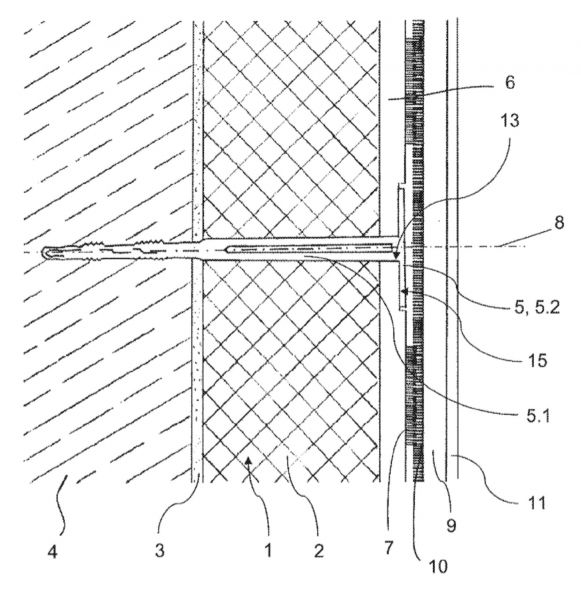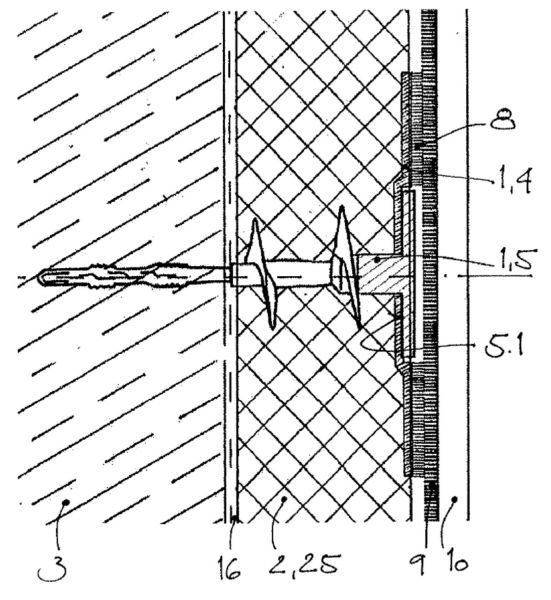Hook-and-Loop fastener application for the technical building equipment
Short Description
Starting point/Motivation
The Hook-and-Loop fastener (better known for its commercial name Velcro®) is omnipresent in many fields today. Its potential lies in the astonishing strength of the bond between two compatible layers, which can in addition be loosened and re-fastened tool-free for several hundred times with very little influence to its strength and durability. Astonishingly, it is far from utilizing its full potential in the construction industry although its properties could have a variety of positive effects on the industry.
Contents and Objectives
Commonly, the building installation lines (such as electricity, water or ventilation, to name just a few) are walled-in, screwed or glued at the construction site. Would these instead be assembled and mounted using the hook-and-loop similar fasteners, the following effects with corresponding consequences could arise:
- Simplified assembly processes: They would decisively accelerate the construction phase of a building and would additionally be less prone to performance-related quality deficiencies.
- Flexible mountings and adaptability: They would enable the building to react to short-notice planning changes as well as to adapt to a new spatial program more efficiently.
- Damage-free connections - both for the base-surface and for the component to be fastened to it - would enable a pure separation of different materials and thus easy re-use. The possibility of easy re-use of specific components could prolong the components in-use phase of the lifecycle, which would contribute to sustainable usage of resources.
The aim of this exploratory project was to develop concepts for the production of surfaces with hook-and-loop-compatible surfaces in buildings, which could serve as a base-surface for simplified mounting of building's installation lines.
Methods
The exploratory project was not limited to the consideration of a single material or a trade, but aimed at the widest possible field of view in order to uncover potentials, that could lead to more extensive and more product-specific research projects in the near future.
The development of conceptual connections between different construction base-surfaces and hook-and-loop components was carried out by a thorough investigation and professional assessment of existing connections. Two innovation matrices were created. The developed concepts were then evaluated by means of evaluation sheets and team discussions. Promising concepts have been physically tested by the Laboratory of Structural Engineering at the Graz University of Technology.
Results
Based on the innovation matrix, a total of 143 concepts for connections between velcro and building materials were developed. Due to their particularly high innovation content, five of these concepts were handed over to the Research & Technology House at the Graz University of Technology, which is currently examining their patentability.
Two key findings form the basis for further research projects. On the one hand, to achieve the envisaged flexibility, the aim is to provide a large hook-and-loop-compatible base-surface of a building (e.g. wall or slab). To achieve the hook-and-loop compatibility, the material of choice would be either velour or fleece, because they are both webbed materials and thus more economical and available in large rolls. The specific properties of the material and its processing specifics must be taken into account for further development.
Secondly, the timing of production of hook-and-loop-compatible base-surfaces is of crucial relevance. Whether during prefabrication, during the construction phase or during reconstruction / remodelling, each intervention requires a different approach.
During the construction phase of reinforced concrete walls or slabs for example, the hook-and-loop-compatible base-surface could be achieved in a variety of ways. Following the manufacturing logic of reinforced concrete, velour or fleece mats could be inserted into the formwork before the concrete is poured. Challenges, such as precise position fixation during the pouring process, or the protection of mats from contamination, need to be addressed. However, completely different approaches are required when the load-bearing construction is already finished or when refurbishment of an existing building is in question. In the last two cases, largely independent of building materials, it was found out, that production of hook-and-loop-compatible base-surfaces is most efficient, when it is done with one of the various available gluing techniques. They are relatively easy to handle, but with disadvantages when it comes to dismantling a building. Namely, the ability to separate building materials at the end of their life-cycle (ideally the velour or fleece mat could be completely separated from other materials), is of great importance for the evaluation of the different concepts.
In addition to these considerations, building materials and construction composites were examined for their potentially inherent hook-and-loop compatibility. First and foremost, these include various fibrous materials which, due to their structure, could under certain circumstances form loops. Such concepts are convincing in terms of material homogeneity and thus complete purity. Nevertheless, tests have shown that the strength of such bonds is far from that of commercially available hook and loop fasteners, which limits, but does not preclude their potential use and development.
Prospects / Suggestions for future research
The exploratory project has shown that it is possible to produce large hook-and-loop-compatible base-surface areas in buildings. This represents a solid foundation for the future achieving of the formulated objectives. Within the institute an in-depth basic knowledge has been created, which provides optimal conditions for further research and development work on the way to the damage-free assembly and disassembly of building's technical installations. The entire project team gained new knowledge in the field of building services, connection and fastening types, and the production & application of hook-and-loop products.
Great potential lies in the exploration of the following topics: Concrete and hook-and-loop surfaces, hook-and-loop-compatible fibrous materials, and alternative connection systems for conventional hook-and-loop-fasteners. The further development either in the form of a state-funded project or together with corresponding and well-known partner companies will therefore be the focus of the future research work of the Institute of Architecture Technology.
Project Partners
Project management
Institute of Architecture Technology, Graz University of Technology
Project partners
Laboratory for Structural Engineering, Graz University of Technology
Contact Address
Institute board, scientific project leader
Univ.Prof. DI. Arch. Roger RIEWE
Institute of Architectural Technology
Graz University of Technology
Rechbauerstr. 12/I
A-8010 Graz
Tel.: +43 (316) 873 6300
E-Mail: riewe@tugraz.at
Web: http://www.iat.tugraz.at/
Deputy Project Manager
University Project Assistant
Dr. tech. Dipl.Ing. Ferdinand OSWALD
Institute of Architectural Technology
Graz University of Technology
Tel.: +43 (316) 873 6308
E-Mail: ferdinand.oswald@tugraz.at
University Project Assistant
M.A. Aleksandra PAVICEVIC
Institute of Architectural Technology
Graz University of Technology
Tel.: +43 (316) 873 6305
E-Mail: pavicevic@tugraz.at
University Project Assistant
Univ. dipl. inz. Arh Ziga KRESEVIC
Institute of Architectural Technology
Graz University of Technology
Tel.: +43 (316) 873 6806
E-Mail: kresevic@tugraz.at
Student project co-worker
BSc. Matthias RAUDASCHL
Institute of Architectural Technology
Graz University of Technology
Tel.: +43 (316) 873 6808
E-Mail: matthias.raudaschl@tugraz.at


